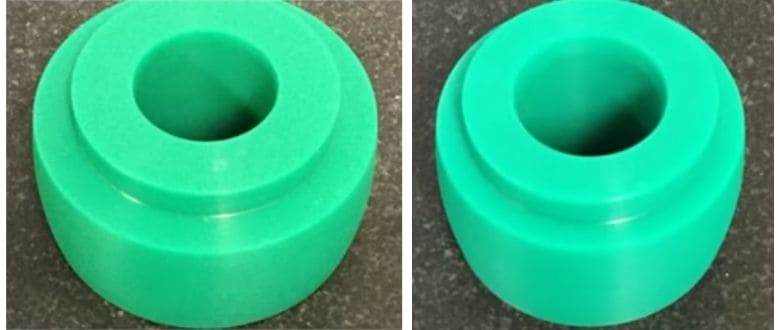
Ultra-High-Molecular-Weight Polyethylene (UHMW-PE or UHMW) is a subset of thermoplastic polyethylene with extremely long chains, resulting in a very tough material with high impact strength and resistance to wear and abrasion. UHMW plastic is commonly used in applications requiring durability and low friction. These attributes make UHMW plastic an ideal candidate for machining into various components for demanding industrial applications. In this post, we’ll delve into the intricacies of UHMW Plastic Machining, exploring its properties, advantages, challenges, and industry applications.
Properties of UHMW Plastic
- High Impact Strength: UHMW plastic is highly impact-resistant, making it ideal for demanding environments.
- Low Coefficient of Friction: Exhibits excellent sliding properties, reducing friction and wear.
- Wear Resistance: Superior resistance to abrasion ensures long service life in high-wear applications.
- Chemical Resistance: Resistant to a wide range of chemicals, including most acids, bases, and organic solvents.
- Low Water Absorption: Minimal water absorption ensures dimensional stability in moist environments.
- Noise Reduction: Provides a quiet operation due to its noise-dampening properties.
- FDA Compliance: Many grades of UHMW are FDA-approved for use in food and medical applications.
Advantages of UHMW Plastic Machining
- Durability: Long-lasting performance even in the harshest conditions, reducing maintenance and replacement costs.
- Efficiency: Low friction and high wear resistance contribute to efficient operation and reduced energy consumption.
- Versatility: Suitable for a wide range of applications due to its excellent mechanical and chemical properties.
- Ease of Machining: Can be easily machined using standard equipment, allowing for the creation of complex shapes and components.
- Safety: Non-toxic and compliant with FDA regulations for food and medical applications.
Disadvantages of UHMW Plastic Machining
- Thermal Expansion: Higher thermal expansion compared to metals can affect dimensional stability in high-temperature applications.
- Machining Challenges: While machinable, UHMW can be difficult to machine due to its tendency to deform under heat and its toughness.
- Limited High-Temperature Use: UHMW has a lower melting point compared to some other engineering plastics, limiting its use in high-temperature applications.
- Surface Finish: Achieving a smooth surface finish can be challenging due to the material’s resistance to cutting.
Industry Use Cases
- Food Processing: Used in conveyor belts, chutes, and wear strips due to its FDA compliance and low friction properties.
- Medical: Employed in prosthetics, orthopedic implants, and medical device components for its biocompatibility and wear resistance.
- Mining and Aggregate: Applied in liners, hoppers, and conveyor systems to handle abrasive materials.
- Automotive: Used in components like chain guides, wear plates, and impact-resistant parts for its durability and noise reduction.
- Packaging: Utilized in machinery components, guide rails, and rollers for its low friction and high wear resistance.
Conclusion
UHMW plastic machining offers a range of benefits, including high impact strength, low friction, and excellent wear resistance, making it suitable for a wide array of industrial applications. While it presents some challenges, such as thermal expansion and machining difficulties, its advantages often outweigh these issues, providing a durable, efficient, and versatile material for demanding environments. Whether in food processing, medical devices, mining, automotive, or packaging, UHMW plastic continues to be a reliable choice for engineers and manufacturers.
FAQs
1. What is UHMW plastic used for?
UHMW plastic is used in various applications requiring high impact strength, low friction, and excellent wear resistance, such as in food processing, medical devices, mining, automotive components, and packaging machinery.
2. How does UHMW compare to other plastics?
UHMW offers superior impact strength and wear resistance compared to many other plastics, although it has a lower melting point and can be more challenging to machine.
3. Can UHMW be used in high-temperature applications?
UHMW has a lower melting point (around 130°C to 136°C) compared to some other engineering plastics, limiting its use in high-temperature applications.
4. What are the machining methods for UHMW plastic?
UHMW can be machined using standard machining techniques such as turning, milling, sawing, and drilling, but it requires careful control of heat and deformation during the process.
5. Is UHMW plastic FDA-approved?
Many grades of UHMW plastic are FDA-approved, making them suitable for use in food processing and medical applications.